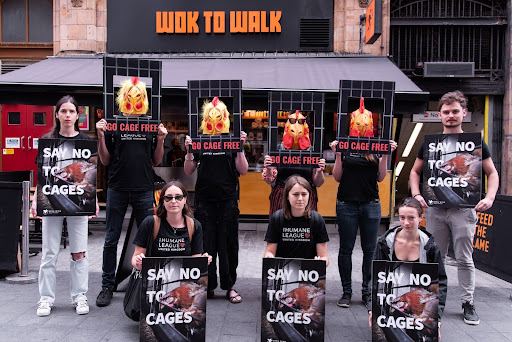It’s September 2016, and Aaron Ross is in the quiet Parisian suburb of Massy, sitting in a sleek conference room at Carrefour’s headquarters. Carrefour is either the largest or second-largest retailer in France, depending on the metric. Ross stands, adjusting his tailored suit as executives shuffle in. For years, he had taken these high-stress meetings in an ill-fitting outfit bought at a thrift store. It hadn’t stopped him from securing dozens of cage-free commitments, but the animal welfare movement was professionalizing, and he figured the old suit wasn’t doing him any favors.
The executives offer Ross a drink and ask him polite questions: how he’s enjoying France, what he works on at The Humane League (THL). Ross explains that he is Vice President of Policy and Strategy, and that one of his responsibilities is to lead global corporate strategy for the Open Wing Alliance (OWA), a coalition of animal welfare organizations that work together to secure welfare gains for egg-laying hens.[1] These days, OWA works on behalf of broiler chickens — those raised for their meat — as well.
After the introductions, Ross begins the pitch he knows by heart. If Carrefour refuses to switch to a cage-free egg supplier, the OWA — with the help of L214, a local member organization — will launch a campaign against Carrefour. The campaign will be aggressive. Protesters will mobilize online and on the ground; they’ll show up in chicken costumes at corporate headquarters and franchise locations. Public ads and social media shame campaigns will further drive negative press. The OWA, Ross explains, will do its best to make Carrefour’s brand synonymous with animal cruelty[2]In caged systems, hens are unable to engage in many natural behaviors such as dustbathing, nesting, perching, and spreading their wings. The Welfare Footprint Project estimates that transitioning from caged to cage-free aviaries reduces the time hens spend in “disabling pain” by 64% and in … Continue reading if they refuse to make necessary welfare improvements.
The corporate campaign model is straightforward: a farm animal welfare organization reaches out to a distributor or company and asks them for a meeting to discuss the source of their eggs. Ask Alex Suchy, THL’s Vice President of Global Programs, and he’ll tell you that Ross is likely the best in the world at this critical outreach stage. If the companies agree to go cage-free, they draft a plan to do so with the OWA’s help. If they don’t, the OWA mobilizes its network of nearly 100 member organizations and begins to campaign.

When I sat down with Suchy and Ross to learn more about the OWA’s cage-free advocacy, Ross told me the organization prefers to work collaboratively with companies; the overwhelming majority of their commitments are secured via negotiation, without a campaign. And in some rare cases, a company will simply agree to transition with barely any discussion. Çiftlik Hayvanlarını Koruma Derneği (CHKD), a Turkish OWA organization and Open Philanthropy grantee, was able to secure a few easy wins like this, before any real outreach work had been done in the country. “You just send emails and have one or two conversations, and suddenly, you affect tens of thousands of animals”, said Emre Kaplan, Executive Director of CHKD. “It was remarkable how successful it was.”
To be sure, Kaplan is describing the best-case scenario. But after many years of phone calls, contentious meetings, and a few protracted campaigns, the OWA (founded by THL in 2016) has secured more than 2,500 cage-free commitments and over 600 commitments for higher broiler welfare. Name a large food supplier — Burger King, KFC, Grupo Bimbo — and there’s a fair chance that either THL or the OWA has played a role in their shift to cage-free. These efforts have impacted hundreds of millions of chickens worldwide. “The number of animals that OWA organizations have been able to help over the last few years is just incredible”, said Amanda Hungerford, Program Officer of Open Philanthropy’s Farm Animal Welfare team.
The counterfactual nature of cage-free work — the fact that caged chickens are very unlikely to be freed without outreach or campaigns — fits particularly well with Open Philanthropy’s “tractability” criteria for grantmaking. While we’re not averse to more speculative forms of giving, the continued success of cage-free campaigns run by THL and the OWA has made them cornerstones of our farm animal welfare portfolio.

THL has run cage-free campaigns since the early 2000s, but it wasn’t until they started securing major corporate wins around 2015 that the work took off. These wins were a breakthrough, allowing the OWA to leverage each successive commitment against the company’s competitors. This inspired their strategy in France, where relatively few cage-free policies had been secured. “We didn’t really know what to expect in France”, Ross told me. “There were no major cage-free policies to speak of, and many titans of the food industry”. But if they could get one of France’s largest retailers to commit, other major companies might follow suit.
*****
Ross left that 2016 Carrefour meeting feeling deflated; the two sides couldn’t come to terms on a commitment deadline. But the negotiations continued, and after just a few months, Carrefour agreed to go 100% cage-free in France. L214, a local Open Philanthropy grantee that had already built a relationship with Carrefour, played a key role in the process. They were a respected animal welfare organization in France, and their involvement in the negotiations indicated that the OWA was capable of marshaling a major campaign in the country.
Ross told me that although the negotiations were intense, Carrefour deserved credit for being the first major company in France to commit. In the following months, each of the top five French retailers followed Carrefour’s lead. The OWA’s bet had paid off — nobody wanted to fall behind their competitors.
Nowadays, the relationship between the OWA and Carrefour is more collegiate than adversarial. “Carrefour has since told me that they remember our first meeting”, Ross said. “They were like, ‘Who are these Americans coming over in business suits, warning us that our brand will be defaced in every market around the world if we don’t use a certain type of egg?’” Carrefour is now fully committed in all countries where they have majority ownership, and is working with the OWA to secure commitments in countries where they license out their brand. “Today, we look back together and laugh at the awkwardly confrontational start to our relationship”, Ross told me.
Wins like Carrefour have also made it easier for OWA members to secure commitments in their own countries. What follows is, in Ross’s words, a “beautiful feedback loop”. When THL launches a campaign against an international company, it can mobilize local OWA members to ensure that the company feels the heat wherever it operates. Likewise, national commitments secured by member organizations help bolster the OWA’s case for additional global commitments from that company, ad infinitum.
The OWA also provides its members with concrete support. Kaplan explained the key role that the coalition has had in CHKD’s success: “It’s extremely difficult to start something from scratch”, he said. “There are so many resources, and so many people willing to help and share their experience”. Through coordinating with the OWA — and with Carrefour’s French offices — Kaplan and his team secured a cage-free commitment from CarrefourSA, Turkey’s fifth-largest retailer.
*****
As of April 2024, 89% of companies with implementation dates of 2023 or earlier — more than 1,200 — have met their commitments, which Suchy told me exceeded almost everyone’s expectations. While it’s difficult to argue against the overwhelming success of the corporate campaign model, Ross and Suchy note that applying it in other contexts, like broiler chicken welfare, is still a work in progress. Activists had hoped that decades of foundational cage-free advocacy — preliminary standards, compulsory labeling, and a preexisting egg supply — would accelerate broiler progress more than has been the case. Still, early returns are promising. According to a recent OWA report on the progress of the European Chicken Commitment, over 230 million broiler chickens in Europe now meet the standards set out by the commitment.
Activists have also learned that country context matters — a lot. Harshdeep Singh, a Program Associate on Open Philanthropy’s Farm Animal Welfare team, explained that the egg industry is unconsolidated in India, and many sales happen on the informal market. Unconsolidated industries are generally hard to campaign against, because potential “big wins” are limited. Likewise, in certain countries, public protesting against large companies simply isn’t done, either because of societal norms or specific laws. This significantly limits the OWA’s leverage.
Despite these challenges, the OWA is still optimistic about expanding its efforts, particularly in Asia. Early foundational work in the region by local organizations like EAST, also an Open Philanthropy grantee, has helped set the conditions for landmark victories. Carrefour’s Taiwanese branch was the first supermarket in Asia to make a cage-free commitment. Not long after, the OWA launched its first campaign against a multinational company headquartered in Asia — Toridoll, which had ignored their initial request for a meeting. Fortunately, it didn’t take a long campaign before the company returned to the table and worked out a commitment timeline.

Some challenges are unique to the region. Relative to US companies, Asian companies tend to follow their own timelines more closely — but also require more effort to secure an initial commitment. Regardless, intermediate progress on implementation is encouraging. “These massive companies based in Asia are now starting to publish commitments”, said Ross. Given that roughly 60% of the world’s eggs are produced in Asia, this is an exciting milestone.

Many expect the astounding success rate to slow down eventually. “My sense is that most advocacy will shift to places where the market is much more diffuse, and it’s just going to be less cost-effective”, said Hungerford. This is to be expected — there are only so many companies the size of Carrefour or KFC. As the OWA has continued to secure these large commitments, much of its work has started to shift to ensuring implementation. 2025 will be a pivotal year in this respect, as it marks the implementation deadline for nearly 40% of all companies with commitments. While the OWA hopes to match the resounding success of the 2023 implementation deadline, Ross emphasized the bigger picture. “We want to see the market shift over to cage-free”, he explained. “We don’t expect all companies to do so by the end of 2025, but the goal is to hit the critical thresholds that allow for more progress.”
When I asked Ross and Suchy for an update on Carrefour, they told me that the company was leading the way on animal welfare in markets worldwide — in 2025, they expect to fully transition to cage-free quail eggs. This isn’t something that the OWA campaigns on; Carrefour approached them about the switch. If a total market shift is the goal, brands incorporating welfare improvements into their core identity is a fantastic indicator of progress. “They’re doing their own welfare”, said Suchy, smiling. “We try to operate from the perspective of: how do we put ourselves out of business?”
Open Philanthropy is proud to support The Humane League and The Open Wing Alliance. If you’re a funder interested in supporting cage-free initiatives, please contact fawteam@openphilanthropy.org. We are eager to partner with other funders and share information to help resources go to the best work.
Footnotes
| 1 | These days, OWA works on behalf of broiler chickens — those raised for their meat — as well. |
|---|---|
| 2 | In caged systems, hens are unable to engage in many natural behaviors such as dustbathing, nesting, perching, and spreading their wings. The Welfare Footprint Project estimates that transitioning from caged to cage-free aviaries reduces the time hens spend in “disabling pain” by 64% and in “hurtful pain” by 57%. |
